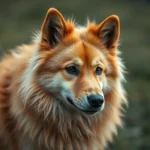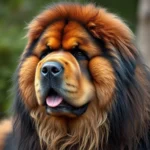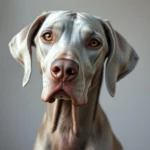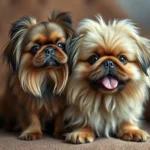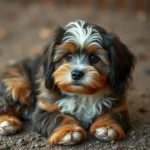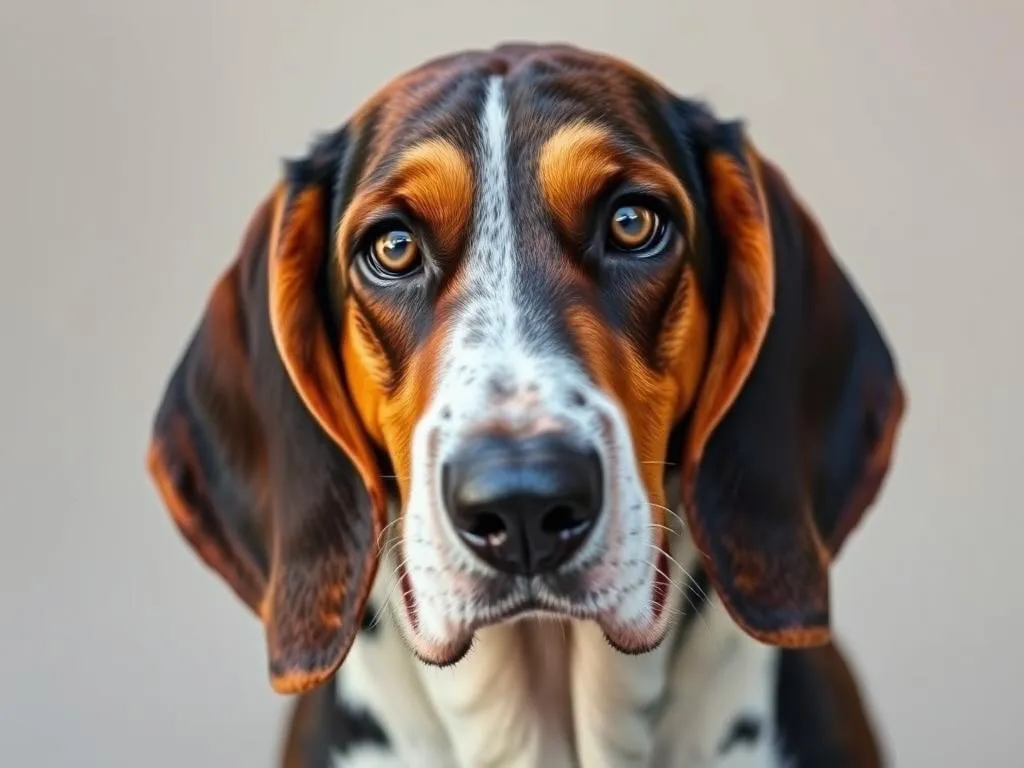
Introduction
Dog breeds play a significant role in human life, serving not only as companions but also as working animals, service providers, and loyal friends. Among the myriad of breeds, the Basset Hound stands out due to its distinctive appearance and gentle temperament. Known for its long ears, droopy eyes, and short legs, the Basset Hound’s unique characteristics have made it a beloved breed worldwide. This article delves into the specifics of the Basset Hound, exploring its origins, physical traits, temperament, and much more, while also offering insights into the broader categories of dog breeds.
Understanding Dog Breeds
Definition of Dog Breeds
A dog breed is defined as a group of domestic dogs with a common ancestry, possessing specific features, traits, and behaviors that distinguish them from other breeds. These differences can range from size and coat type to personality and skills. Understanding dog breeds is crucial as it helps potential owners choose a dog that fits their lifestyle and preferences. Each breed has its unique characteristics that influence its behavior, health, and training needs.
Overview of Dog Breed Categories
Dog breeds are typically categorized into various groups based on their historical functions and traits. Here’s a brief overview of the primary categories:
- Working Group: Includes breeds developed for specific tasks such as guarding, pulling sleds, and performing search and rescue.
- Herding Group: Comprises breeds that assist in the herding and management of livestock.
- Sporting Group: Encompasses breeds bred for hunting and retrieving game.
- Hound Group: Features breeds known for their keen sense of smell and tracking abilities, including the Basset Hound.
- Terrier Group: Contains breeds that were originally bred to hunt vermin.
- Toy Group: Consists of small breeds that are often bred for companionship.
- Non-Sporting Group: A diverse category that includes various breeds not fitting into the other groups.
- Miscellaneous Group: Includes breeds that are recognized by certain organizations but not yet fully recognized.
The Basset Hound: An In-Depth Look
History and Origins
The Basset Hound has a rich history that dates back to the 6th century, originating in France. The breed was developed primarily for hunting small game, particularly rabbits and hares, thanks to its exceptional sense of smell and gentle nature. The word “basset” comes from the French word “bas,” meaning low, which aptly describes this breed’s unique stature. Over the years, the Basset Hound has evolved from a hunting companion to a cherished family pet, known for its loyalty and affectionate demeanor.
Physical Characteristics
The Basset Hound is easily recognizable due to its distinctive features:
- Size and Weight: Typically, Basset Hounds weigh between 40 to 65 pounds and stand about 12 to 15 inches tall at the shoulder.
- Coat Types and Colors: They have a short, dense coat that comes in various colors, including tri-color (black, white, and tan), lemon, and red and white.
- Distinctive Features: Their long, droopy ears and loose skin are not just for appearance; they help in tracking scents. The Basset Hound’s short legs are perfect for navigating through dense underbrush in their hunting days.
Temperament and Behavior
The Basset Hound is known for its easy-going and friendly nature. Key personality traits include:
- Affectionate: They are loving and enjoy being around people, making them great family pets.
- Laid-back: Known for their relaxed demeanor, Basset Hounds are not overly energetic, preferring to lounge around.
- Socialization: They tend to get along well with children and other pets, although early socialization is important to ensure they are well-adjusted.
However, they can exhibit some behavioral quirks, such as a stubborn streak, which can make training a bit challenging.
Lifespan and Health Considerations
The average lifespan of a Basset Hound is around 10 to 12 years. While they are generally healthy, certain health issues are more common in the breed:
- Hip Dysplasia: A genetic condition that can lead to arthritis and mobility issues.
- Ear Infections: Their long ears can trap moisture and debris, leading to infections if not properly cleaned.
- Obesity: Basset Hounds have a tendency to gain weight, so it’s essential to monitor their diet and exercise.
Regular veterinary check-ups are crucial to catch any potential health issues early and maintain their overall well-being.
Living with a Basset Hound
Suitable Living Environment
Basset Hounds adapt well to various living situations, be it a house with a yard or an apartment. However, certain conditions enhance their quality of life:
- Exercise Needs: While they don’t require excessive exercise, daily walks and playtime are essential to keep them healthy and prevent obesity.
- Outdoor Space: A fenced yard is ideal for allowing them to roam safely and explore their environment, as they love to follow scents.
Nutrition and Feeding Guidelines
A well-balanced diet is crucial for the health of a Basset Hound. Here are some nutritional guidelines:
- Recommended Diet: High-quality dog food that meets their nutritional needs is essential. Look for formulas designed for medium to large breeds.
- Special Dietary Needs: Due to their propensity for obesity, it’s important to choose lower-calorie food options if your Basset Hound tends to gain weight.
- Feeding Schedules: Regular feeding schedules help manage their weight. Portion control is vital, as they can be quite food-driven.
Training and Socialization
Training a Basset Hound can be both rewarding and challenging. Here are some effective strategies:
- Positive Reinforcement: Use treats and praise to encourage good behavior, as they respond well to positive reinforcement.
- Early Socialization: Introducing them to various environments, people, and other pets at a young age is crucial for balanced behavior.
- Challenges: Their stubbornness can make training a test of patience. Consistency and short, engaging training sessions are key to overcoming these challenges.
Grooming and Maintenance
Coat Care
Grooming a Basset Hound is relatively straightforward:
- Grooming Frequency: Brush their coat weekly to remove loose hair and reduce shedding.
- Bathing: Bathe them as needed, usually every few months, or when they get particularly dirty.
Ear and Eye Care
Due to their unique anatomy, Basset Hounds require special attention to their ears and eyes:
- Ear Cleaning: Regular cleaning of their ears is essential to prevent infections. Use a vet-recommended solution.
- Eye Care: Keep an eye on their eyes for any signs of irritation or discharge, as they can be prone to certain eye conditions.
Exercise and Activity Level
While Basset Hounds are not as high-energy as some breeds, they still need regular exercise:
- Daily Routine: Aim for at least 30 minutes of walking daily, along with some playtime or mental stimulation.
- Fun Activities: Consider activities like scent games, which tap into their natural tracking instincts, making exercise fun and engaging.
The Basset Hound in Popular Culture
Representation in Media
The Basset Hound has made numerous appearances in media, often portrayed as lovable and comical characters:
- Famous Characters: Iconic Basset Hound characters, such as Snoopy from the “Peanuts” comic strip, have contributed to the breed’s popularity and endearing reputation.
- Public Perception: These portrayals have cemented the Basset Hound as a symbol of loyalty and laid-back companionship, encouraging many to consider them as pets.
Basset Hound Events and Organizations
Numerous events and organizations are dedicated to celebrating the Basset Hound:
- Basset Hound Competitions: Events like the Basset Hound Club of America National Specialty showcase the breed’s beauty and skills.
- Welfare Organizations: Various organizations focus on the rescue and welfare of Basset Hounds, promoting responsible breeding and adoption.
Conclusion
The Basset Hound is a unique breed, characterized by its distinctive appearance, gentle temperament, and rich history. Whether you’re drawn to their charming looks or their affectionate nature, owning a Basset Hound can be a rewarding experience. While they do come with their set of challenges, such as stubbornness and health considerations, the joys of having a loyal companion far outweigh the difficulties. For those considering adding a Basset Hound to their family, understanding the breed’s needs and characteristics is crucial for a harmonious relationship. These lovable dogs have a way of capturing hearts, making them a cherished addition to any home.

